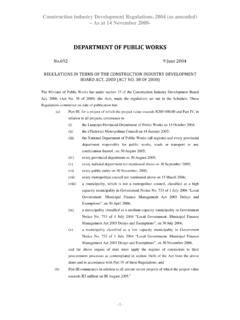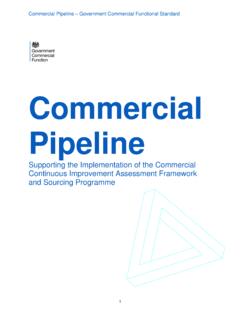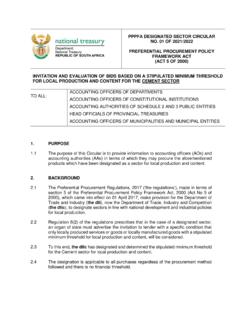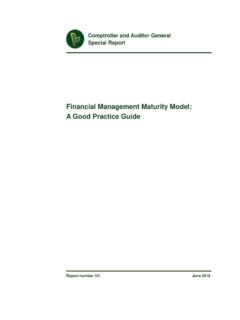Transcription of SubContracting in the South African Construction Industry ...
1 SubContracting IN THE South African CONSTRUCTIONINDUSTRY; OPPORTUNITIES FOR DEVELOPMENT Copyright 2013 ISBN 978-0-620-56039-9 i SubContracting IN THE South African Construction Industry ; OPPORTUNITIES FOR DEVELOPMENT EXECUTIVE SUMMARY SubContracting , including specialist, generalist, trade and labour-only subcontractors, is an integral component of the Construction Industry , and its importance has been increasing in the Industry over the last two decades in South Africa and elsewhere around the world. As part of the cidb s role to stimulate reform and improvement in the Construction sector and to promote best practice, the cidb undertook this study on the state of the SubContracting sector with a primary objective to better understand skills development within the SubContracting sector and to identify opportunities for improving skills development within this sector .
2 In support of understanding skills, the study included an assessment of: the structure and nature of the SubContracting sector ; management practices within subcontractors; and contracting practices between main contractors and subcontractors. The study focuses on specialist, generalist and trade SubContracting practices, and excludes labour-only SubContracting practices. Structure and Nature of SubContracting This study recognises that SubContracting is a business strategy that is used by main contractors to deal with uncertainties in the Construction market, and allows the main contractor to reduce operating costs and thereby enhance competitiveness. SubContracting is very prevalent in the South African Construction Industry , with up to 70% of building and 30% of civil Construction projects subcontracted out. The most prevalent types of SubContracting are labour-only, trade contracting in the building sector and specialist SubContracting in the building and civil sectors.
3 The duration of typical subcontracts in the building Industry is between three (3) and six months (6) months with the civil sector Industry having longer duration subcontracts of about twelve (12) months on average. Subcontractors can generally be categorised into one of the following categories: specialist subcontractors that undertake specialist services, especially building or engineering services such as electrical, plumbing and heating, ventilating and air-conditioning (HVAC); generalist and specialist trade subcontractors that offer general trade or specialise on specific trades services such as painting and brickwork many of which are general contractors that use SubContracting as a means to get work during periods of tough competition but can and often prefer to work as main contractors; and labour-only subcontractors; skilled tradesmen that provide labour-only services, while the main contractor provides the materials and supervision.
4 Main contractors have a major influence on a subcontractor s access to work opportunities, and key factors influencing a main contractor s choice of subcontractors include the subcontractor s: financial capability; track record; Construction management systems; compliance with legislative requirements; and BEE status. Subject to a subcontractor meeting these basic requirements, the key criterion for subcontractor selection is then the subcontractor s bid amount (or price). Relationships between contractors and subcontractors are ii then predominantly long-term, and are dependent on the on-going performance of the subcontractor including the quality of work of the subcontractor. Most subcontractors claim not to have experienced significant problems with main contractors, and to have good working relationships with the main contractors. However, dissatisfaction with main contractors does arise because of late payments, under-payment, and where main contractors put pressure on subcontractors to reduce their price (and hence margins).
5 Specifically, the main contractors and subcontractors in this study all identified payment practices as the main source of conflict between the parties, with the pay-when-paid principle being singled out as chief amongst these. Poor working relationships appear to be most prevalent in the low-income housing sub- sector due to the low profit margins which result in subcontractors bearing the brunt of tough working conditions. Management Practices Management practices are the backbone of any successful business, and this study has identified that: overall, management practices of specialist subcontractors were considered by main contractors to be good, but for generalist and trade subcontractors were considered to be fair to poor; financial management skills and business management systems of general subcontractors were poor, with business management skills and management and supervision being fair; many subcontractors, especially smaller and trade subcontractors have poor health and safety management practices; and many subcontractors are reluctance to train their employees.
6 This study identified the following key challenges faced by subcontractors that influence their performance: lack of security of payment; bid price pressure from main contractors; weak management practices; poor attitudes within SubContracting organisations; and general Industry -wide factors, including lack of working capital, high levels of competition and skills shortages. As strategies to overcome these factors, subcontractors typically adopt the following as key success factors in overcoming these challenges: quality improvements; facilitating access to work opportunities; and good relations with main contractors. Contracting Practices While formal contracts are generally used, contractual relations between the main contractor and the subcontractor are often governed on an ad hoc basis or by using less sophisticated documentation. The failure to sign a formal contract is generally viewed as being disadvantageous to the subcontractor.
7 However, both main contractors and subcontractors in this survey were adamant that while the contract specifies the roles, rights and relationships between the parties, their effectiveness depends on goodwill and on the desire of the parties for collaborative working relationships. The contract should be a tool to build relationships, and not a weapon to fight the other party with. In saying so the contractors acknowledged that adversarial relationships existing within the Industry are driven by tight profit margins, payment practices, lack of continuous work and traditional roles and relationships between contractors and their subcontractors. Of concern is that this study identified that where formal contracts are not being used, reasons advanced for not using formal contracts included: iii lack of formal company registration documents on the part of the subcontractor; and the reluctance of main contractors to formalise agreements so as to avoid audit trails of payments.
8 Both the above reasons point to issues of governance and ethics. Skills Development The relationships between main and subcontractors have a high potential for skills transfer and for learning, and the degree and quality of skills transfer mainly depends on: the willingness and aptitude of the subcontractor; the willingness of the main contractor to pass on skills; and pressure/incentives from the client. However, successful development only happens if both main and subcontractors are intent on long-term strategic relationships, as most subcontractors are reluctant to share confidential information with other companies, especially financial information. Main contractors are however active in passing on skills in labour, health and safety, and environmental management practices, to reduce the probability of default on the part of the subcontractors as the clients hold the main contractor accountable for compliance with these regulations.
9 Cidb Subcontractor Development Initiatives As context to this report, it is relevant to note existing cidb policy and regulatory initiatives aimed at the development of subcontractors and improving the performance of subcontractors. Many of these initiatives target the development of contractors in general, but can, or have, a specific focus on the development of subcontractors. These initiatives include: i) The cidb Standard for Indirect Targeting for Enterprises Development through Construction Works Contracts will establish a contract participation goal (CPG) relating to the engagement joint-venture partners or subcontractors that are also to be beneficiaries of enterprise development support from the main contractor ii) The cidb Standard for Developing Skills that Result in Nationally Accredited Outcomes through Infrastructure Contracts will establish a contract participation goal (CPG) relating to the provision of different types of workplace skills development opportunities which culminate in or lead to: a part qualification; a national qualification; a professional registration; or structured work internship resulting in qualification to undertake a trade test.
10 The Standard will become mandatory on public sector contracts, and will provide subcontractors access to such skills development opportunities. iii) The cidb Contractor Performance Reports will provide a track record and an assessment of the performance of the main contractor with, amongst others, management of subcontractors. Such information can in time be taken into account in Construction procurement on public sector contracts for the purpose of: assessing the suitability of contractors for pre-qualification, selective tender lists or expressions of interest; and adjudication for the award of a contract. iv Main contractors are encouraged to adopt the cidb Contractor Performance Reports on subcontracts, which will facilitate the development of subcontractors and will provide for the development of a track record for subcontractors. iii) The cidb Standard for Minimum Competence Requirements of Contractors which sets out the minimum acceptable competencies necessary for running a contracting enterprise and for supervising building and Construction works.

















